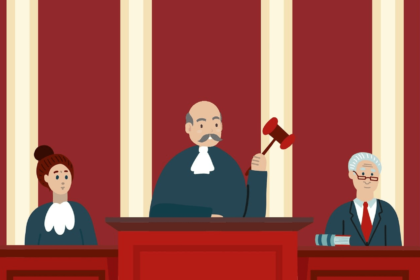Numerous studies of market practices indicate that the role of UX design is evolving significantly. Businesses are shifting from abstract discussions about improving user experience within a user-centric approach to focusing on digitized KPI metrics. Today, UX teams are expected to deliver concrete business results. However, not all specialists are prepared for these demands. The increasing business expectations require UX professionals to be highly versatile and able to work seamlessly across research, analysis, information infrastructure development, and testing within tight deadlines. Competitive advantages are now held by UX designers who have amassed relevant experience, particularly those who have thrived in international startups where strict requirements and broad opportunities for creative solutions coexist. These specialists are adept at meeting high standards while driving innovation. One such professional, Anna Vasyukova, exemplifies this blend of expertise and adaptability. She has successfully navigated the complexities of UX design in various international projects, consistently delivering impressive results. Anna is now poised to share her valuable insights with our readers, offering guidance to those looking to enhance their practices and better meet market demands. Her experience and innovative approach provide a roadmap for UX designers aiming to excel in this dynamic and competitive field.
– Anna, you have already been developing yourself in the industry for more than 15 years and established yourself as a seasoned professional in UX design with high standards. What makes you such a demanding specialist, and what qualities should modern UX designers have to succeed in this ever-changing world of rising demands?
– To thrive in the fast-paced world of UX design, there are a few key qualities every designer should develop. First, adaptability and versatility are essential. You need to be comfortable doing everything from user research and data analysis to creating information architecture and testing prototypes. This broad skill set allows you to tackle various project challenges effectively. Continuous learning is crucial. The field of UX design is always evolving, with new tools and trends emerging all the time. Stay curious, keep learning, and continually update your skills to stay ahead.
One of the most important factors of success is balancing a user-centric focus with a business mindset, as you need to understand how to meet user needs while also driving business outcomes. Next, creativity and innovation are keys to success, so think outside the box and come up with unique solutions. This will help you create engaging, intuitive user experiences that stand out in the market. You need to articulate your design concepts clearly, justify your decisions, and incorporate feedback. This ensures that everyone, from team members to stakeholders, is on the same page.
Empathy and user advocacy are at the heart of UX design. Always put yourself in the users’ shoes, understand their needs, and design with their experiences in mind. Understanding front-end technologies and design systems can help you create solutions that are not only beautiful but also feasible and scalable.
By focusing on these qualities, you can meet and exceed the demands of the industry, driving both user satisfaction and business success. The key is to be proactive, stay adaptable, and always be ready to innovate.
– Without a doubt, you have these qualities; you have already worked with many well-known companies and implemented many projects. For example, you managed to work for Сirсa and greatly strengthened its position in the market. Tell us what you managed to do in the company to be one of the outstanding experts in the field of UX design today.
– Sure, definitely one of the standout examples of my success is working at Circa. I joined the team as the Lead Product Designer, and the company achieved year-over-year revenue growth of 290% during this period. There, even greater success was achieved, including, for example, customer engagement at Circa increasing by 330%. Circa was a fantastic experience. It’s one of the most demanded event management platforms built to help marketing teams succeed in the new world of virtual and hybrid events. I saw my task as finding additional growth opportunities. To accomplish this, I constantly conducted extensive UX Research to understand user needs. The analysis of the research results provided the key to success. Based on it, I developed a whole range of new options. I pioneered the design and execution of several features, including Event Calendars, Events Dashboards, Event Request Forms, Sharable Event Briefs, Events ROI Dashboards, Contacts, and Event Registration Forms. Additionally, we customized the platform to the specific business processes of individual companies. Farmers Insurance, for instance, appreciated the effectiveness of these customizations, estimating an 80% cost savings.
– Circa was already an established business when you made your own essential contribution to its success. Still, do you have experience with a pure startup where everything starts from scratch, and there’s a need to quickly ensure, for example, a sharp increase in app downloads?
– Surely. I had a very interesting experience with an Armenian-based startup, Eye Care Plus. This is an application that helps people combat existing eye problems and preserve healthy eyes through tailored eye care exercises and training plans. For people with vision problems, more than anyone else, a clear and understandable interface of the application is important. And through numerous tests, we achieved the perfect solution. In their reviews, over 30,000 users have noted the high comfort level when working with this interface. The total number of app downloads quickly exceeded 1 million.
– That’s impressive. In your experience, can UX Design contribute to attracting venture investments to a startup?
– Absolutely. FR8Star was a very early-stage US-based startup, and I joined it as the first designer in 2017. Now, it is a cloud-based, data-driven tool that improves the freight transportation industry by providing shippers with transparent transport pricing and allowing carriers and brokers to bid on hundreds of available freight requests daily. At that time, the task was to build up a Minimum Viable Product from scratch. The solution entirely depended on how comfortable brokers and carriers would find it to easily develop quotes and bid on high-value loads directly from our customers. Based on the user experience analysis, I proposed an architecture that convinced investors that the service would be in demand. We raised $8.5 million for this project.
– You’re working for Jiffy.com now. After you achieved impressive company revenue and customer engagement growth of 290 and 330 present, respectively, after securing $8.5 million in funding for FR8Star, after achieving one million downloads for Eye Care Plus, what results do you aim to achieve in this project?
– Joining Jiffy.com was an exciting opportunity. Jiffy.com is a leading reseller of blank imprintable clothing, known for its extensive range of products and customization options. The company was included in America’s Best Online Shops in 2024. With a stellar rating of 4.88 stars from over 81,992 reviews on Sitejabber, JiffyShirts has earned the trust and satisfaction of our customers. Winning the customer choice award in 2021, 2022 and 2023. My goal was to enhance the user experience by deeply understanding user needs and industry standards. This research-driven approach has significantly improved Jiffy’s clients’ e-commerce experience. I collaborated closely with the Product Owner and Product Manager to define the product roadmap, focusing on features that align with both strategic goals and customer needs. This innovative approach has helped streamline the design process, fostering better user experience and supporting the platform’s growth.
The tools and platforms I design and refine are indispensable to the mission of the company, providing crafters with the resources and support they need to achieve unprecedented levels of success.
Absolutely. The work is conducted within a product team, in close collaboration with stakeholders, product managers, developers, customer service, and marketing.
By combining data-driven research with innovative ideation processes, I ensure that our efforts are both effective and creative. Drawing from my extensive experience across various products, I wrote an article about how to invite your team and organize an ideation workshop that will boost innovative ideas. I developed a highly effective ideation template for Figma that has been used by over 300 colleagues for its ability to generate excellent ideas quickly.
The synergy of efforts is facilitated by ideation processes, and their rational organization is of both practical and academic interest to me. I wrote an article on this topic and recently created a template for Figma that has been widely acclaimed by over a hundred of my colleagues.
– Your unique ideation template is popular among colleagues from the industry. What’s more important it definitely solves the ideation stage problem, helping to structure the whole process. Anna, as far as we know, you generalize your experience and actively share it with others – both as an author of scientific articles and as an educator at the Armenian Code Academy. How do you envision the modern UX Design professional?
– As a pivotal member of the product team, a UX designer must be well-versed in a variety of domains such as user research, data analysis, product development, usability testing, and more. It’s essential to collaborate effectively with product managers and developers while seamlessly shifting between tactical execution and strategic thinking. Our success lies in our ability to interpret and leverage diverse inputs, aligning them with user needs and business objectives. This approach not only meets the customer’s requirements but also drives the business towards significant growth in its key metrics.








